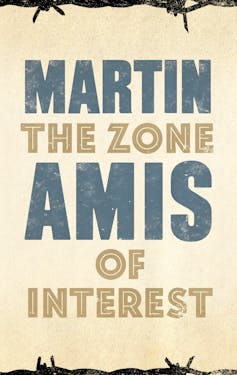The Zone of Interest: the dark psychological insight of Martin Amis’s Holocaust novel is lost in the film adaptation
- Written by Paul Giles, Professor of English, Institute for Humanities and Social Sciences, ACU, Australian Catholic University

Martin Amis, who died last year, was always very concerned about his future place in the literary canon. He said that, since the “truth” about writers is only revealed 50 years after their death, they “feel the honour of being judged by something that is never wrong: time”.
Jonathan Glazer’s new film The Zone of Interest is based on Amis’s 2014 novel of the same name. It will undoubtedly revive general interest in the author’s work. But in truth Glazer’s film has very little in common with Amis’s original novel.




